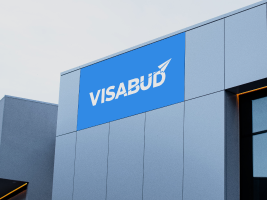Serbia Travel Guide: All you need to know to visit Serbia in 2024
Welcome to Serbia
Welcome to Serbia
With its rich cultural diversity and distinctive cuisine, Serbia offers a range of activities that will make for a fantastic trip. In addition, many film, music, and cultural events are also held annually. In conclusion, this Eastern European nation will undoubtedly be among the most fascinating on your vacation itinerary! With valuable and motivational travel tips, this comprehensive guide to Serbia will help you get the most out of your trip.
Document checklist for Serbia
- Visa (if applicable)
- Valid passport
Essential Serbia travel information
Currency – RSD, or Serbian dinar. RSD 110 is equal to $1.
Daily budget for 1 person – RSD 3979 ($36).
Languages – Serbia has Serbian as its sole official language across the country.
Socket type – 50Hz, 230V supply voltage, C and F.
Time zone – Central European Standard Time (GMT+1).
Top 3 cities to visit – Belgrade, Novi Sad, and Niš.
Top 3 landmarks/monuments – The Belgrade Fortress, the Nikola Tesla Museum, and the Skull Tower.
Visa information for Serbia
Visitors to Serbia must have visas unless they are from a nation that does not need them.
Typical costs and budget for Serbia
Daily spending – RSD 3979 ($36) per person.
Meals – 1,300 RSD ($12).
Transport – Local transportation may cost up to RSD 487 ($4.45) per day.
Hotel – For a pair, a hotel in Serbia costs about RSD 4,306 ($39).
The typical cost of a weeklong journey for two individuals to Serbia is RSD 54,940 ($500).
Transport and best ways to travel around Serbia
The most convenient way to cross Serbia is by coach or bus, which goes to important cities and remote regions. Most communities are connected by regular, timely, and economical transportation.
Rental automobiles are generally accessible and fantastic for getting to off-the-beaten-path locations. However, because Serbian cars have been targeted in the past, rental firms will likely forbid you from driving the vehicle to Kosovo, Albania, or Bulgaria out of safety concerns. Additionally, bringing your car into Serbia is feasible without a green card.
Safety in Serbia
Serbia has a shallow crime rate for a nation that has been recovering slowly from years of conflict and security difficulties. But, just like they would anywhere else, tourists must exercise prudence.
The Serbian mafia, which has arisen in Serbia due to challenging economic conditions, is frequently linked to organized and violent crime. Nevertheless, violent crime seldom targets visitors.
There may still be landmines from the late 1990s civil conflict in southern Serbia, close to Kosovo. Therefore, visitors should stay on well-traveled roads and trails in this region.
Weather in Serbia
The best seasons to visit Serbia are in the spring and summer. Most days are bright and pleasant from May through September, with peak temperatures in July and August. Winter brings a lot of snow, chilly temperatures, and rainy weather.
Must do and see in Serbia
The capital city of Serbia is Belgrade, which is situated along the banks of the Sava and Danube rivers. In the city’s oldest neighborhood, Stari Grad, you may visit Belgrade Fortress to learn more about the region’s history.
Learn about the lovely and endearing city of Novi Sad, which hosts the largest music festival in Serbia, the EXIT Festival, each July in the magnificent Petrovaradin Citadel.
Discover the magnificent, historic monasteries of Serbia, the most notable of which are Studenica, Decani, and Gracanica.
Typical Serbian food to try
Red bell peppers and eggplant make the vegetable relish known as ajvar. It comes from the Balkans and is popular at ethnic restaurants in Serbia, Croatia, North Macedonia, and Bosnia and Herzegovina.
Srpska Salata is the Serbian equivalent of the Bulgarian salad shopska. Tomatoes, cucumbers, onions, and peppers are all diced nicely. Unfortunately, it doesn’t have cheese as the Bulgarian ones do.
Sarma is a dolma that uses the same ingredients but is cooked over sauerkraut after being wrapped in pickled cabbage leaves.
Vaccine information for Serbia
Before booking your travels, it’s critical to understand which vaccinations and COVID-19 precautions are needed to visit Serbia. We advise visiting the CDC website for further details on the criteria and suggested medication lists.
Related Articles

5 min read
New Zealand Introduces Key Changes to Post Study Work Visa : What You Should Know
According to the government, this change will provide students with greater flexibility in their academic choices while ensuring they remain eligible to work. For many students, studying abroad is a
Read More
5 min read
The Singapore visa processing time for Indian citizens
Singapore is a small island located in the Malay Peninsula in Southeast Asia. It is one of the most economically developed countries in the world. Singapore is a fantastic place
Read More
5 min read
How Much Does an Australia Trip Cost from India?
If you are planning a trip from India to Australia, you must follow some of the points. that are : Planning Budget Traveling date and time To which place you
Read MoreNo, Indian people do not require a visa to enter Serbia for a brief period if they travel there for business, pleasure, or transit.
Travel to the nation is visa-free for Indians.
For citizens of the Republic of India, entry, transit through, and stays in the Republic of Serbia for up to 30 days after the date of entry within a calendar year are not subject to visa requirements.
Generally speaking, getting insurance in case of a vacation or medical emergency is a brilliant idea. Visa Bud can help you get the best insurance plan to safeguard yourself from unexpected medical expenses while traveling and luggage damage or loss.
Applicants are encouraged to get travel insurance to safeguard their vacation in the event of unanticipated events like medical problems, plane cancellations, luggage delay or loss, etc.
